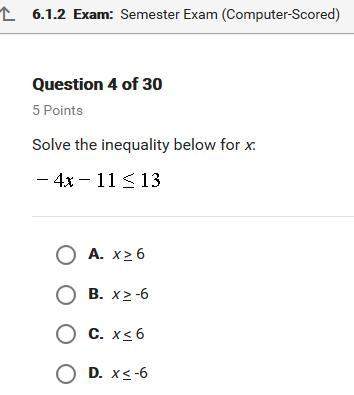
Mathematics, 15.09.2021 23:40 rfultz27
Suppose that you have two water jugs, one which holds three gallons and one
which holds five gallons. In addition, you have a water faucet at your disposal. Your job
is to find a method that produces exactly one gallon of water, another method that
produces exactly two gallons of water, another that produces exactly three gallons of
water, etc. up to exactly eight gallons of water. You may fill jugs from the faucet or from
one another. You may not, however, use estimates. For example, you may not
produce one gallon by estimating one-third of the three gallon jug.

Answers: 2


Other questions on the subject: Mathematics

Mathematics, 21.06.2019 15:30, nayelimoormann
Turner's mom measured his room to see how long the wallpaper border needed to be. if two walls are 15 feet long and two walls are 12 feet long, how long should the strip of border be cut?
Answers: 1


Mathematics, 21.06.2019 17:00, SillyEve
In tossing one coin 10 times, what are your chances for tossing a head? a tail? 2. in tossing one coin 100 times, what are your chances for tossing a head? a tail? 3. in tossing one coin 200 times, what are your chances for tossing a head? a tail? deviation = ((absolute value of the difference between expected heads and observed heads) + (absolute value of the difference between expected tails and observed tails)) divided by total number of tosses. this value should always be positive. 4. what is the deviation for 10 tosses? 5. what is the deviation for the 100 tosses? 6. what is the deviation for 200 tosses? 7. how does increasing the total number of coin tosses from 10 to 100 affect the deviation? 8. how does increasing the total number of tosses from 100 to 200 affect the deviation? 9. what two important probability principles were established in this exercise? 10. the percent of occurrence is the obtained results divided by the total tosses and multiplied by 100%. toss the coins 100 times and record your results. calculate the percent occurrence for each combination. percent head-head occurrence: percent tail-tail occurrence: percent head-tail occurrence:
Answers: 3

Mathematics, 21.06.2019 18:30, Snowinvain
An arc subtends a central angle measuring 7pi/4 radians what fraction of the circumference is this arc?
Answers: 1
You know the right answer?
Suppose that you have two water jugs, one which holds three gallons and one
which holds five gallo...
Questions in other subjects:




Mathematics, 05.05.2020 19:01






Mathematics, 05.05.2020 19:01




